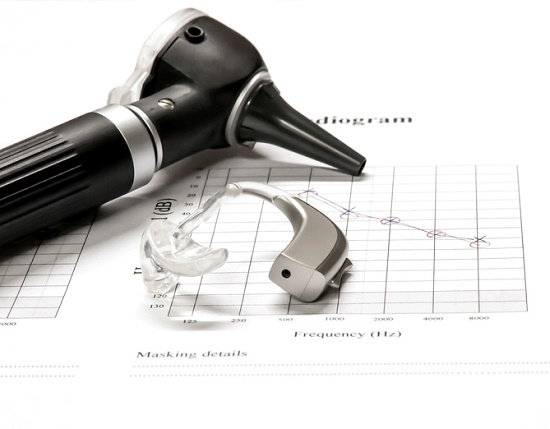
Are you contemplating investing in hearing aids?
If so, it can feel overwhelming at first. There are numerous options available, and the perplexing terminology doesn’t help.
That’s why we’re going to summarize the most common and important terms, so when you work with your hearing professional you’ll be prepared to find the ideal hearing aid for you.
Hearing loss and testing
High-frequency hearing loss – this is the most commonly encountered type of hearing loss. People with high-frequency hearing loss have the most difficulty hearing higher frequency sounds, like the sounds of speech.
Sensorineural hearing loss – this type of hearing loss comes about when there is damage to the nerve cells of the inner ear. This is the most common type of permanent hearing loss caused by direct exposure to loud noise, the aging process, genetics, or other medical conditions.
Bilateral hearing loss – hearing loss in both ears, which may be symmetrical (the same level of loss in both ears) or asymmetrical (different degrees of loss in each ear). Bilateral hearing loss is as a rule best treated with two hearing aids.
Audiogram – the graph which provides a visual description of your hearing test results. The vertical axis measures decibels (volume) and the horizontal axis measures frequencies (pitch). The hearing consultant registers the lowest decibel level you are able to hear at each frequency. If you require higher volumes to hear higher frequencies, your audiogram will show a sequence of high-frequency hearing loss.
Decibel (dB) – the unit utilized to measure sound level or intensity. Ordinary conversation registers at around 60 decibels, and long-term exposure to any sound over 80 decibels could cause permanent hearing loss. Seeing as the scale is logarithmic, an increase of 6-10 decibels doubles the volume of the sound.
Frequency – represents pitch as measured in hertz. Think of moving up the keys on a piano, from left to right (low-frequency/pitch to high-frequency/pitch).
Threshold of hearing – The lowest decibel level that can be detected at each individual frequency.
Degree of hearing loss – Hearing loss can be classed as mild (26-40 dB loss), moderate (41-55), severe (71-90), or profound (91+).
Tinnitus – a persistent ringing or buzzing in the ears when no exterior sound is present. Normally an indication of hearing injury or loss.
Hearing aid styles
Digital hearing aid – hearing aids that include a digital microchip, utilized to custom-program the hearing aids to complement each person’s distinctive hearing loss.
Hearing aid style – the type of hearing aid specified by its size and location relative to the ear. Core styles include behind-the-ear, in-the-ear, and in-the-canal.
Behind the ear (BTE) hearing aids – the majority of hearing aid components are contained within a case that fits behind the ear, attached to an earmold by a clear plastic tube. Mini-BTE hearing aids are also available.
In the ear (ITE) hearing aids – the hearing aid parts are contained inside of a case that fits in the external part of the ear.
In the canal (ITC) hearing aids – the hearing aid parts are enclosed in a case that fits inside of the ear canal. Completely-in-the-canal (CIC) hearing aids are also available that are practically invisible when worn.
Hearing aid parts
Earmold – a piece of plastic, acrylic, or other pliable material that is molded to the curves of the patient’s ears, used for the fitting of hearing aids.
Microphone – the hearing aid part that picks up sound in the environment and converts the sound waves into an electrical signal.
Digital signal processor – a special microprocessor inside of a hearing aid that can manipulate and enhance sound.
Amplifier – the component of the hearing aid that boosts the volume of sound.
Speaker – the hearing aid component that supplies the enhanced sound to the ear.
Wireless antenna – available in certain hearing aids, permitting wireless connection to compatible gadgets such as smartphones and music players.
Hearing aid advanced features
Variable programming – hearing aid programming that enables the user to adjust sound settings depending on the environment (e.g. at home versus in a busy restaurant).
Directional microphones – microphones that can center on sound coming from a specific location while reducing background noise.
Telecoils – a coil located inside of the hearing aid that allows it to hook up to wireless signals originating from telephones, assistive listening devices, and hearing loops installed in public venues.
Noise reduction – functionality that helps the hearing aid to differentiate speech sounds from background noise, which results in the enhancement of speech and the inhibition of distracting noise.
Bluetooth technology – allows the hearing aid to communicate wirelessly with several devices, such as smartphones, computers, MP3 players, and other compatible devices.
Not sure which features you need, or which you could live without? Let us help you discover the best hearing aid for your distinct needs. Give us a call today!
